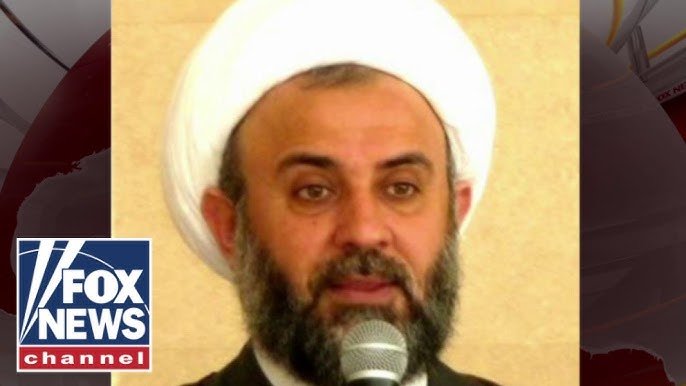“Israel eliminates another top Hezbollah commander”
The Israeli Military Inflicts Further Blows on Hezbollah: What’s Next?
The Lebanese militant group Hezbollah has been dealt a significant blow with the death of its leader, Hassan Nasrallah, in an Israeli airstrike. The ripple effect of this event is likely to shape the future of both Hezbollah and the region. Israel’s military, taking advantage of this moment of vulnerability, has intensified its attacks, further pressuring the organization. In this article, we explore the current state of Hezbollah, the weapons at its disposal, and the broader geopolitical implications of Nasrallah’s death.
Hezbollah’s Arsenal: What Weapons Does It Possess?
Hezbollah, backed by Iran, has amassed a formidable collection of weapons, making it one of the most potent non-state armed groups in the world. Here’s a visual guide to some of its key armaments:
- Rockets and Missiles: Hezbollah has an estimated 150,000 rockets and missiles, including short-range rockets capable of hitting northern Israel and longer-range precision-guided missiles that can target deeper into Israeli territory. This arsenal has been the cornerstone of Hezbollah’s deterrence strategy.

- Drones: In recent years, Hezbollah has significantly expanded its drone capabilities, some of which are believed to be supplied by Iran. These unmanned aerial vehicles (UAVs) can be used for reconnaissance and, in some cases, as armed drones.
- Anti-Tank Missiles: Hezbollah is equipped with advanced anti-tank missiles, such as the Russian-made Kornet, which were used effectively during the 2006 Lebanon War against Israeli armor.
- Naval Capabilities: Hezbollah has also developed some maritime assets, including anti-ship missiles. While their navy is modest, these weapons pose a threat to Israel’s coastal assets.
- Small Arms and Guerrilla Tactics: Hezbollah has thousands of fighters trained in guerrilla warfare, with access to small arms, explosives, and other conventional weapons. Their combat experience, particularly in the Syrian Civil War, has made them a battle-hardened force.
What Might Come Next for Hezbollah?
Nasrallah’s death is undoubtedly a severe blow to Hezbollah, but it’s far too early to write off the organization. With strong backing from Iran and deep-rooted support within Lebanon, Hezbollah’s resilience cannot be underestimated. However, the coming months could see a series of internal and external challenges:
- Internal Power Struggles: The immediate concern for Hezbollah is the leadership vacuum left by Nasrallah’s death. While the group has a hierarchy in place, replacing a figure as charismatic and influential as Nasrallah won’t be easy. Potential successors may vie for control, leading to factionalism within the organization.
- Iran’s Role: As Hezbollah’s primary benefactor, Iran will likely play a crucial role in guiding the group through this crisis. Tehran may send financial and military aid to reinforce Hezbollah and ensure it continues to function as a regional proxy.
- Regional Escalation: Israel’s strikes have escalated tensions in Lebanon, and Hezbollah may retaliate in an attempt to regain its stature. Such a response could trigger a larger conflict that draws in other regional powers, including Iran and Syria.
- Pressure from Lebanon: Hezbollah’s involvement in regional conflicts, particularly in Syria, has drawn criticism from within Lebanon. With the country facing a dire economic crisis, many Lebanese view Hezbollah’s military activities as a liability. The death of Nasrallah could intensify these sentiments, leading to increased political pressure on the group.
International Reactions and U.S. Policy
The death of Nasrallah has added a new layer of complexity for U.S. President Joe Biden’s administration. The U.S. has long supported Israel’s right to defend itself against Hezbollah but has also sought to maintain stability in Lebanon. The Biden administration will need to carefully balance these interests to avoid a full-blown regional war.
White House officials have cautiously welcomed Nasrallah’s death, with some suggesting that it could lead to a weakened Hezbollah, which would benefit both regional and global security. However, others warn that Hezbollah’s retaliation could spark broader unrest, drawing the U.S. into another Middle Eastern conflict.
Conclusion
The death of Hezbollah’s leader, Hassan Nasrallah, marks a significant moment in the ongoing struggle between Israel and Hezbollah. While Israel’s military continues to inflict further blows on the group, the future remains uncertain. Hezbollah’s vast arsenal, regional support, and complex internal dynamics make it a resilient force, despite the setback. As both Israel and Hezbollah brace for the next phase of this conflict, the world watches closely, knowing that the outcome will have far-reaching implications for the Middle East.
This is a delicate moment in regional geopolitics, with potential ramifications for Lebanon, Israel, and international powers. While some may see Nasrallah’s death as a positive development for regional stability, it is clear that Hezbollah’s future, and by extension the future of the region, hangs in the balance.
Related
Discover more from NewsPour
Subscribe to get the latest posts to your email.




Let your voice be heard! Share your thoughts and ignite discussions.